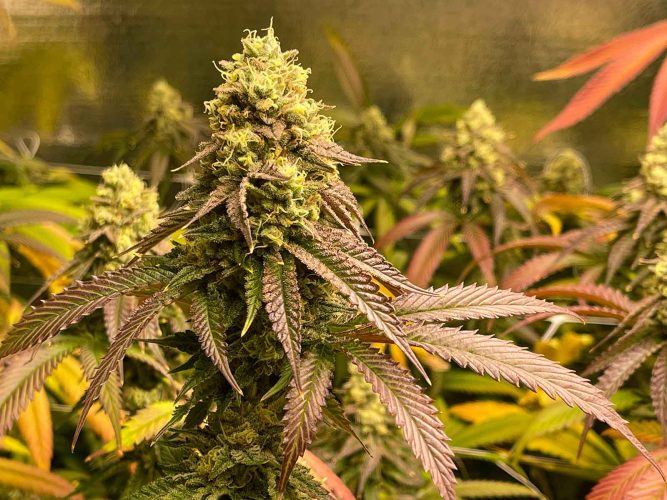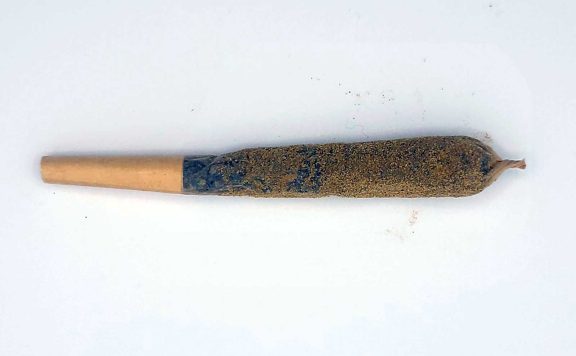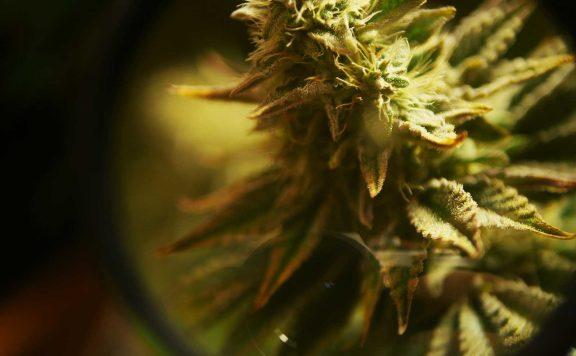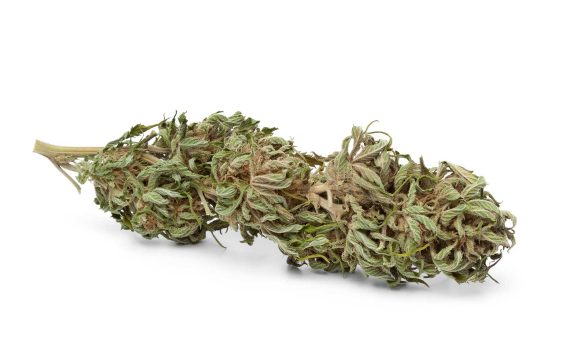Cannabis, also known as marijuana, weed or herb, is a plant species that has been used for a variety of purposes for thousands of years. It is native to Central Asia and the Indian subcontinent, and has been cultivated for a wide range of uses, including for medicinal, recreational, and industrial purposes. The plant originates from many landrace strains, which are the purest and oldest strains that have been grown in their native regions and have not been hybridized.
The cannabis plant is typically divided into two main types: Cannabis sativa and Cannabis indica. These two types have different characteristics, with sativa strains typically having higher levels of THC (tetrahydrocannabinol) and being associated with more uplifting and energizing effects, while indica strains tend to have higher levels of CBD (cannabidiol) and are associated with more relaxing and sedating effects.
When discussing the cannabis plant, the different parts that are typically considered include the flower, leaves, stems, roots, and cola. The flower is the part of the plant that is used for consumption and contains the highest concentrations of THC and CBD. The leaves are the main photosynthetic organs of the plant, responsible for absorbing light and converting it into energy. The stems provide support for the plant and transport water and nutrients from the roots to the leaves. The roots anchor the plant in place and absorb water and nutrients from the soil.
Below we’ll explore each of these sections in more detail.
Examining the Anatomy of the Cannabis Flower
The flower of the cannabis plant, also known as the bud or cola, is the most well-known and widely used part of the plant. It is the part of the plant that contains the highest concentrations of the compounds that give the plant its unique characteristics, such as THC and CBD.
In terms of physical appearance, the cannabis flower is typically dense and compact, with a variety of colors ranging from green to purple, depending on the strain. The buds are covered in a sticky resin, which is where the majority of the plant’s active compounds are found. The aroma of the flower can vary widely depending on the strain, but it is often described as pungent, earthy, and skunky.
The cannabis flower is made up of several distinct parts, including the bract, calyx, pistil, and stigma.
- The bract is the outermost layer of the flower and is typically where the majority of the trichomes, or resin glands, are found.
- The calyx is the next layer and is made up of small, round structures that contain the reproductive organs of the plant.
- The pistil is the female reproductive organ of the plant and is located in the center of the calyx. It is made up of the stigma, which is the sticky part of the pistil that catches pollen, and the ovules, which are the structures that produce the plant’s seeds.
- The male reproductive organs, known as the stamens, are found in separate flowers and are responsible for producing pollen.
The compounds that give the cannabis flower its unique characteristics include cannabinoids, terpenes, and flavonoids. Cannabinoids are the compounds responsible for the plant’s psychoactive and medicinal effects. Terpenes are compounds in cannabis responsible for the plant’s aroma and also have medicinal properties. Flavonoids are pigments that give the plant its colour and have antioxidant properties.
The combination of these compounds in specific strains will give the flower its unique characteristics, including its aroma, colour, and effects. This is why the flower is considered the most important and widely used part of the plant.
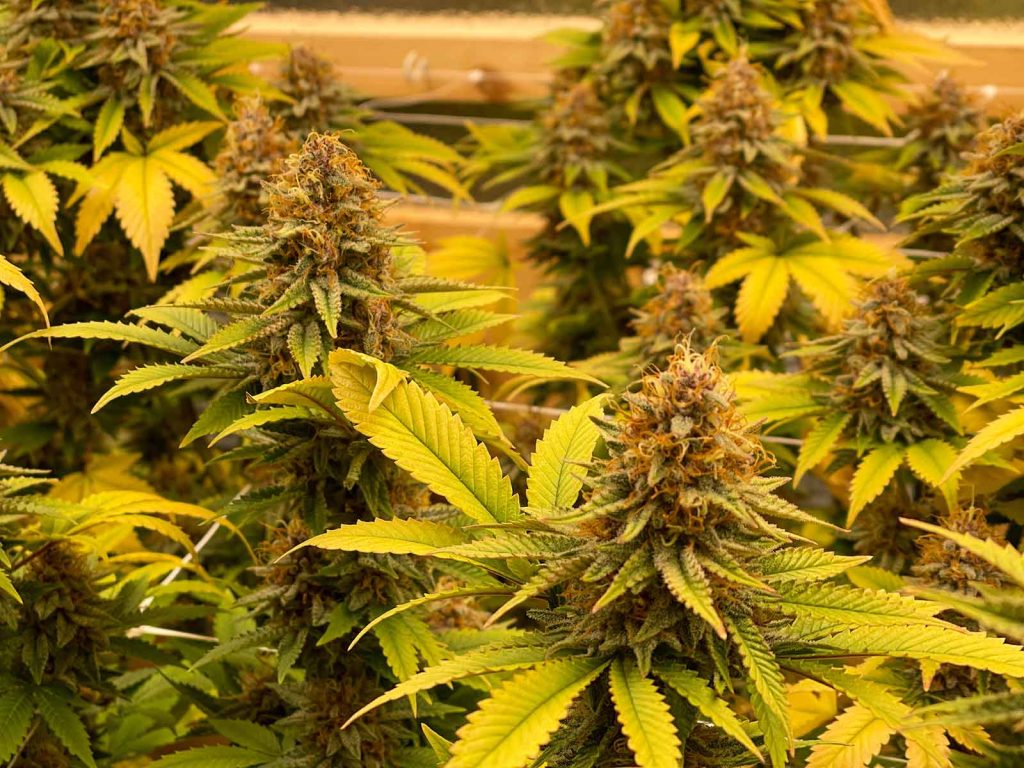
The Big Bud: Understanding the Cola
The cannabis cola, also known as the main stem or main flowering part, is the most prominent and visible part of the cannabis plant. It is located at the top of the plant, and is responsible for producing the flowers and buds that are used for consumption or extraction. The cola is typically the largest and most developed part of the plant, and it is where the majority of the plant’s trichomes and cannabinoid-rich resin are found.
The cola is made up of many individual flowers, each of which is made up of a calyx, bract, and pistil. The calyx is the small, green, leaf-like structure that surrounds the flowers and buds. The bract is the small, leaf-like structure that surrounds the calyx and the pistil is the small, hair-like structure that protrude from the center of the flower. These structures are all important for the reproduction of the cannabis plant, as the pistil is responsible for catching and fertilizing the pollen from the male plants.
The cola also contains the highest concentration of trichomes, which are small, hair-like structures that cover the surface of the flowers and buds. These trichomes are responsible for producing the majority of the plant’s cannabinoids, terpenes, and flavonoids, which give the plant its unique aroma, flavour, and medicinal properties.
The cola is also responsible for the development of the buds, which are the tightly packed clusters of flowers that are typically harvested and used for consumption or extraction. These buds are typically denser and more resinous than the rest of the plant, and contain the highest concentrations of cannabinoids and terpenes.
The cola of the cannabis plant is typically the most sought-after part of the plant, as it contains the highest concentrations of the compounds that give the plant its medicinal and recreational properties. The size, density, and quality of the cola can vary depending on the strain of the plant.
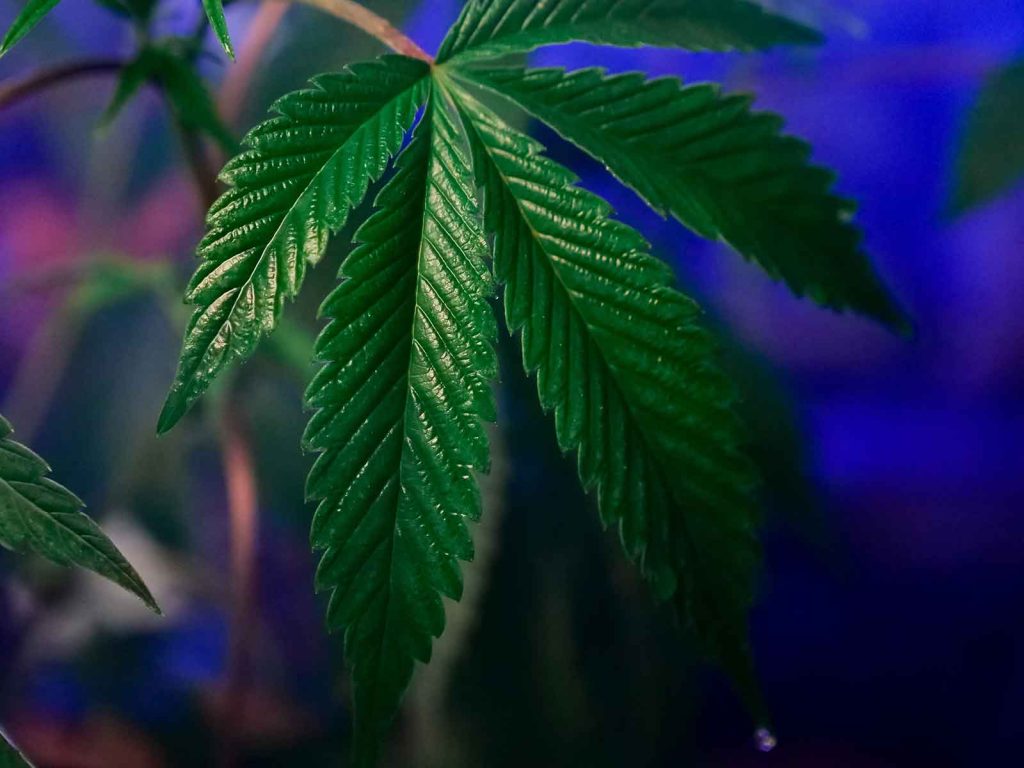
The Role of Leaves in the Growth and Development of the Cannabis Plant
The leaves of the cannabis plant are an integral part of its growth and development. They are responsible for carrying out the process of photosynthesis, which converts light energy into chemical energy to fuel the plant. The shape and size of the leaves can vary greatly, but they typically have a distinctive serrated edge and can grow up to several inches in length.
Cannabis leaves can be broadly categorized into two types: fan leaves and sugar leaves. Fan leaves are the larger leaves that are typically more abundant and spread out along the branches of the plant. They are characterized by their wide, flat shape and are the primary source of energy for the plant. Sugar leaves, on the other hand, are smaller leaves that are found near the buds and flowers of the plant. They are covered in tiny trichomes, which are small resin glands that contain high concentrations of cannabinoids and terpenes.
The cotyledon is another important part of the cannabis plant’s leaves. It is the first set of leaves to emerge from the seed and is crucial in providing the plant with the energy it needs to grow and develop during its early stages.
The leaves play an important role in the plant’s growth and development by absorbing light and converting it into energy for the plant to use. They are also responsible for the process of transpiration, which is the process by which the plant releases water vapor from its leaves to cool itself down and maintain proper water balance. The leaves of the cannabis plant also produce oxygen and absorb carbon dioxide, which is important for the growth and survival of the plant.
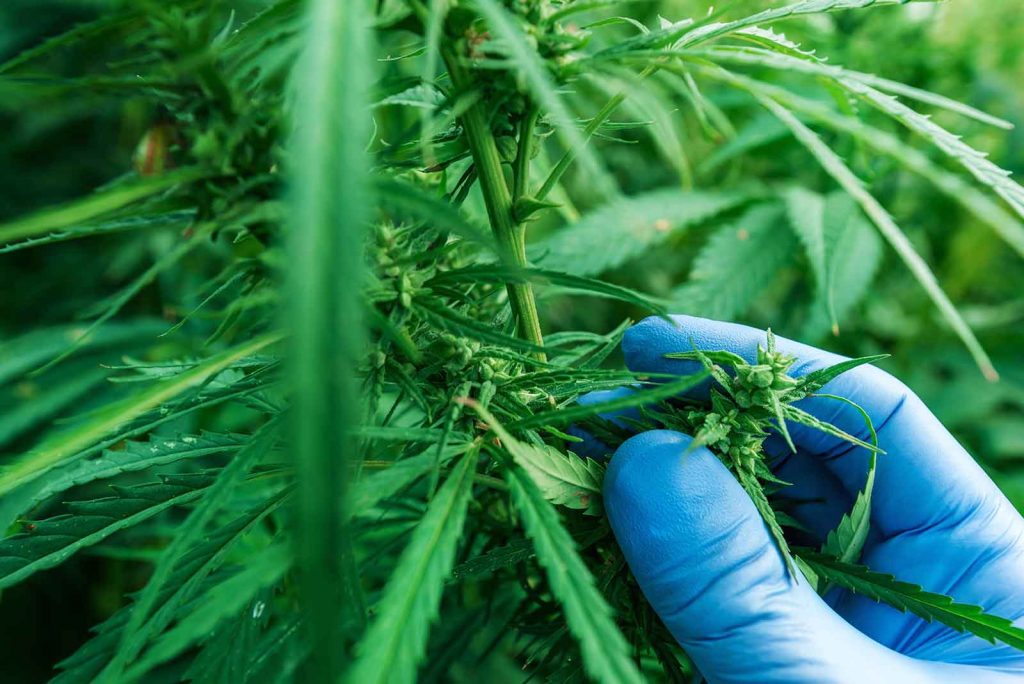
Support and Transport: Importance of Stems in the Cannabis Plant
The stems of the cannabis plant are an essential part of the plant’s structure, providing support and transport for the plant’s water and nutrients. The stem is the main structural support of the plant, helping the plant stand upright and providing a pathway for the transport of water and nutrients from the roots to the leaves.
In terms of strength and structure, cannabis stems are typically thick and woody, becoming stronger as the plant matures. The stems are typically green in colour but can also take on shades of purple or red depending on the strain.
The stem plays an important role in the plant’s growth and development by providing support for the plant’s leaves and flowers. It also acts as a conduit for the transport of water and nutrients from the roots to the leaves and flowers. The water and nutrients are transported through specialized cells called xylem and phloem. Xylem cells transport water and minerals from the roots to the leaves, while phloem cells transport sugars and other nutrients from the leaves to the rest of the plant.
The stem also plays a role in the plant’s defense mechanism, when the plant is under attack, it can divert more resources to the stem to produce a thicker, stronger structure.
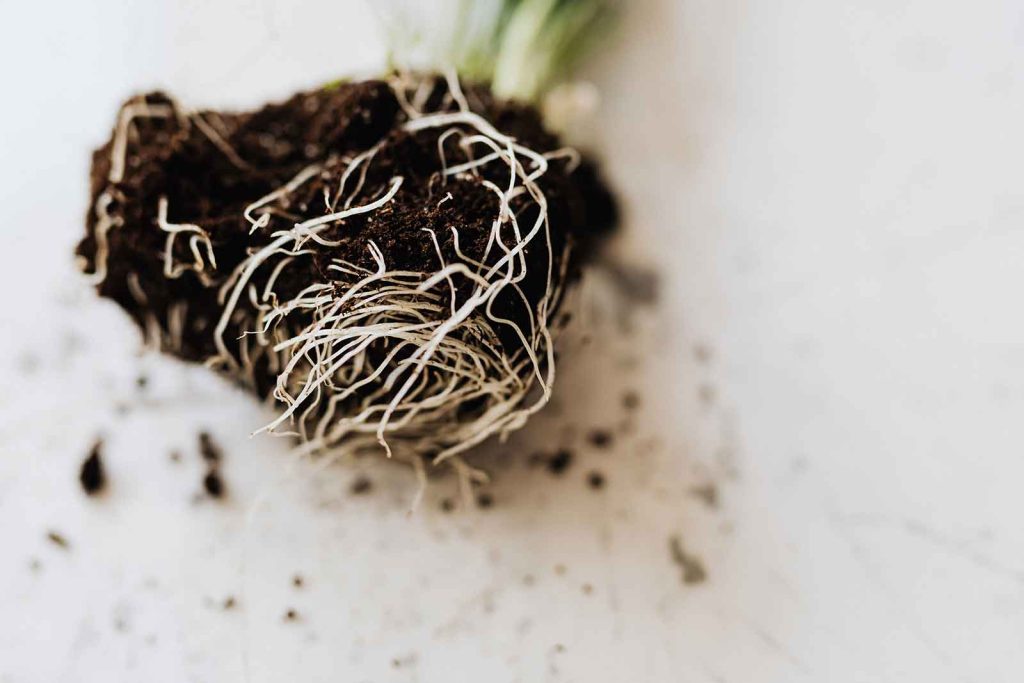
Anchor and Absorb: The Function of Roots in the Cannabis Plant
The roots of the cannabis plant are an essential part of the plant’s anatomy, playing a vital role in anchoring the plant in place and absorbing water and nutrients from the soil. The roots of the cannabis plant are typically white or off-white in colour, and are located underground.
The primary role of the roots is to anchor the plant in place, keeping it stable and upright. The roots also play a key role in absorbing water and nutrients from the soil. The roots are covered in small, hair-like structures called root hairs, which are responsible for absorbing water and nutrients from the soil. These root hairs are highly sensitive to changes in the soil’s moisture and nutrient levels, allowing the plant to quickly respond to changes in its environment.
The roots are also responsible for the process of osmosis, which is the movement of water across a semi-permeable membrane. Osmosis is critical for the plant’s survival, as it allows the plant to absorb water and nutrients from the soil and transport them to the rest of the plant.
The cannabis plant has a deep taproot system and a fibrous root system. This allows the plant to absorb water and nutrients from the soil from a wide area, which helps the plant to grow in a variety of soil types and climates. In addition, the taproot allows the plant to go deep into the soil to reach water and nutrients that other plants may not be able to access.
Significance of Knowing the Different Parts of the Cannabis Plant
In this article, we discussed the key differences along with the different parts of a cannabis plant including their roles in the plant’s growth, development, and medicinal properties. We began by providing an overview of the cannabis plant, its history, and its uses. Then we dove deeper into the various parts of the plant itself which included the flower, leaves, stems, roots, and cola.
The flower of the cannabis plant is the reproductive organ of the plant and is composed of the calyx, bract, pistil, and stigma. It is where the majority of the plant’s trichomes and cannabinoid-rich resin are found and also where reproduction occurs. The leaves of the cannabis plant are responsible for photosynthesis, which is the process by which the plant converts sunlight into energy. The stem of the cannabis plant is responsible for support and transport of water and nutrients. The roots of the cannabis plant are responsible for anchoring the plant in place and absorbing water and nutrients from the soil. Lastly, the cola is the main flowering part of the plant and is responsible for producing the buds and flowers that are used for consumption or extraction in order to make different cannabis product types.
It is important for those who grow, use, or study the cannabis plant to understand the different parts of the plant and their roles, as this knowledge can greatly impact the plant’s growth and development, as well as its medicinal properties. Understanding the different parts of the plant can also help one to identify and select the best strains of the plant for their specific needs.
In summary, understanding the different parts of the cannabis plant is essential for those who grow, use, or study it as it can greatly impact the plant’s growth and development and also its medicinal properties.
References and Additional Reading
- “The Botany of Cannabis” by Robert Connell Clarke – This book provides a comprehensive overview of the anatomy and biology of the cannabis plant.
- “Marijuana Horticulture: The Indoor/Outdoor Medical Grower’s Bible” by Jorge Cervantes – This book is a practical guide to growing and cultivating the cannabis plant, and includes detailed information on the different parts of the plant and their functions.
- “Cannabis: A Complete Guide” by Robert C. Clarke and Mary Ann Clarke – This book provides an in-depth look at the history, botany, and uses of the cannabis plant, and includes detailed illustrations of the different parts of the plant.
- “The Science of Cannabis” edited by Leslie Iversen – This collection of essays provides an overview of the scientific research on the cannabis plant, including its anatomy and biology.
- “Journal of Experimental Botany” – This peer-reviewed scientific journal publishes articles on a wide range of topics related to botany, including the anatomy and biology of the cannabis plant.
- “Journal of Plant Physiology” – This peer-reviewed scientific journal publishes articles on the physiology and biology of plants, including the cannabis plant.
- “Planta Medica” – This peer-reviewed scientific journal publishes articles on medicinal plants, including the cannabis plant.

